#philippine indigenous people
Explore tagged Tumblr posts
Text
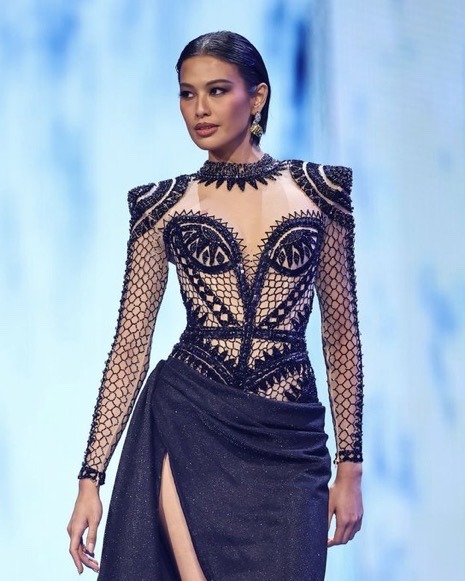
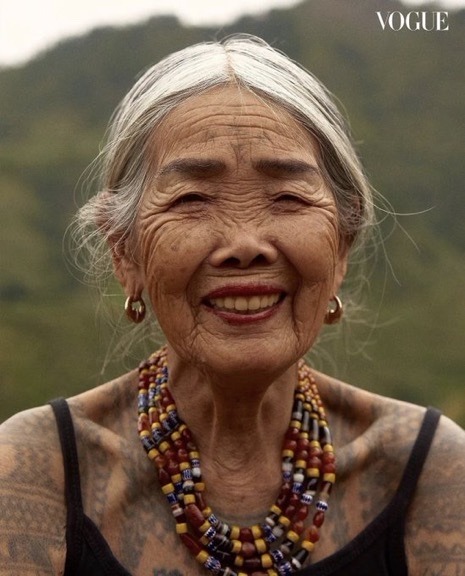
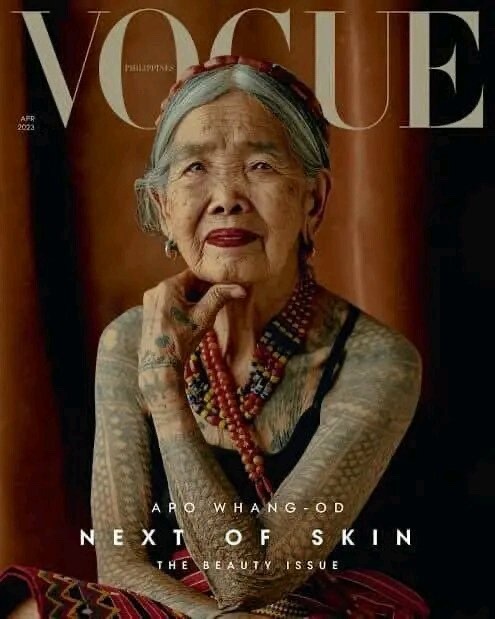
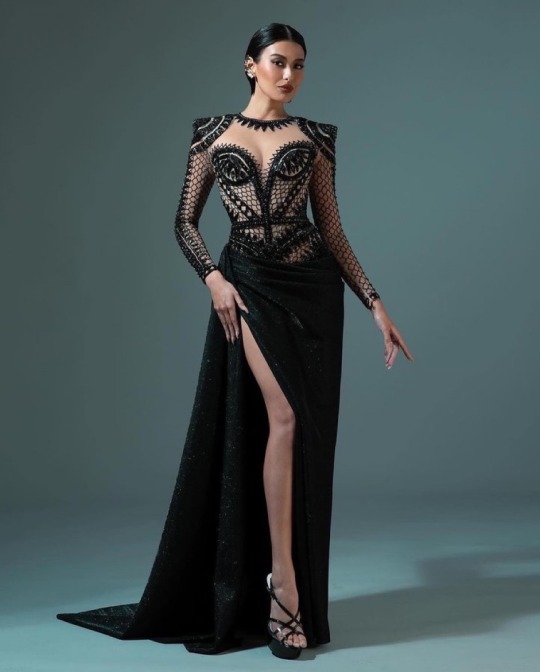
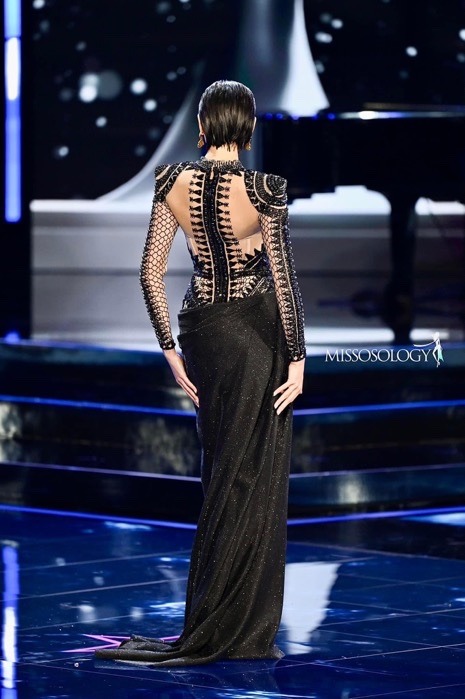

Michelle Dee, Miss Phillipines 2023, wore a dress as a tribute to the last and oldest living Kalinga (Indigenous Filipinos) tattoo artist, Apo Whang Od and her work
#michelle dee#Michelle Marquez dee#Maria Whang Od Oggay#apo whang od#philippines#miss universe#miss universe 2023#filipino#fashion#couture#fashion history#tattoo#indigenous#indigineous people#history#Art history#Vogue#miss Philippines#miss Philippines 2023#mine
10K notes
·
View notes
Text
Philippine weapons and attire
The mannequin is wearing Bontoc loincloth, hat, and pasiking (woven backpack) and holding a Bontoc shield.
The glass case behind the mannequin is displaying headhunting axes from the Mountain Province peoples.
Philippine spears for fishing, hunting, and combat

Museo Oriental de Valladolid -mejor colección de arte oriental en España
10 notes
·
View notes
Text
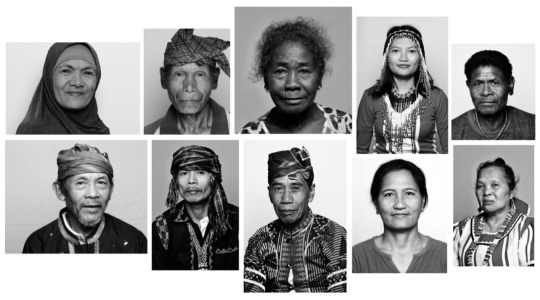
Indigenous Peoples of the Philippines
Photos by Maximilian Larena and Ophelia Casel. Descendants of First Sundaland, Sama, Manobo, and Igorot-related peoples.
238 notes
·
View notes
Text







Tumandok (2024)
sa direksyon nina Richard Jeroui Salvadico at Arlie Sweet Sumagaysay
#cinemalaya#tumandok#richard jeroui salvadico#arlie sweet sumagaysay#philippine cinema#pelikulang pilipino#ati#indigenous peoples#philippines#world cinema#dailyworldcinema
75 notes
·
View notes
Text

Bagobo person, Cotabato, Mindanao, P.I. 1904-1905 (William R. Eastman, Sr. Collection)
33 notes
·
View notes
Text

#mexico#guatemala#honduras#el salvador#nicaragua#Costa Rica#Panama#Cuba#república dominicana#dominican republic#Puerto Rico#Venezuela#Colombia#Ecuador#Peru#Bolivia#Paraguay#Argentina#Uruguay#Chile#philippines#equatorial guinea#memes#jajaja#usa#Canada#indigenous people's day#poem#poetry#Australia
11 notes
·
View notes
Text

Dalman, Manguiane from Mindoro (Philippines)
Taken during the 1904 World's Fair
Photographer: Gerhard Sisters
#Gerhard Sisters#black and white photography#1904 World's Fair#1904#worlds fair#mangyan#philippines#mindoro#indigenous peoples#Manguiane#photography#vintage photography#Mangyan people
12 notes
·
View notes
Text
To see a brown Miss Philippines for the first time had me in literal tears. I didn't even know I still cared about those pageants until I saw the news and got all choked up. Chelsea Manalo is gorgeous and I'm so happy to see the country slowly but surely outgrow colonial standards of beauty. Honestly, I never thought I'd see the day.
(I know racism is still a huge problem there but at the very least I hope seeing her in the media will inspire some girls to throw away the papaya soap. 😭)
#AND she's an advocate for indigenous people#colorism#racism#miss philippines#miss philippines 2024#philippines#miss universe#chelsea manalo#manalo means “to win” and i love that for her#filipina#filipino
15 notes
·
View notes
Text

A "Negrito" - umbrella term meaning "little black people", formerly used for various indigenous groups in Southeastern Asia who have small stature and dark skin - from the Philippines
Belgian vintage postcard
#black#skin#belgian#southeastern#carte postale#term#ephemera#photo#historic#asia#postcard#stature#negrito#tarjeta#postal#southeastern asia#umbrella#little#people#meaning#small#briefkaart#dark#ansichtskarte#photography#philippines#vintage#postkaart#postkarte#indigenous
7 notes
·
View notes
Text
Philippines: Indigenous people seek peace after attacks | Human Rights News | Al Jazeera
"Philippines: Indigenous people seek peace after attacks | Human Rights News | Al Jazeera" https://www.aljazeera.com/amp/news/2017/12/19/philippines-indigenous-people-seek-peace-after-attacks
No matter how these shit people who calls themselves white try to tell us that their mistreatment of Black Indigenous People worldwide were long ago and if this is true please tell me why these shit people are still continuing to harm Black Indigenous People globally?
Do these shit people know that Black Indigenous People worldwide communicate with each other? The rest of the world doesn't know much about our Black African history of being the first people to inhabit lands outside of Africa.
Have any one of you asked yourself how did we get to these lands before Europeans started telling their lies about discovering something that people already lived before they invaded our lands and murdered our people?
This same shit is still going on today because many of us are isolated and we don't want to be a part of your westernized minds because it's totally evil and inhumane. Christianity is still being forced on our people today rather allowing us to believe as we always have.
We are called Negroids and everything else that is demeaning to us, they have the light skin Philippino people. This is so sad 😭 how these shit people who calls themselves white is fucking up our planet and together we must deal with these shit people before they destroy us all.
We have to put these shit people in their place because we have had enough of their shit. Everywhere these shit people go they still bring harm to our Black Indigenous People worldwide and we have to stop them now, not tomorrow, not wishing to coexisting with them, because these shit people doesn't understand the meaning of what peace and equality means.
They wish to be looked upon as good people and I can honestly tell you that no one who calls themselves white or christian is good. They are the nastiest and immoral people on earth.
They don't follow one damn thing that their christian doctrine to tell them how to behave. They rape innocent women and children, they perform unnatural sexual acts and yet they try to demean homosexuality and lesbianism and this is what they do behind closed doors as to think we can't see everything about them is a lie.
They still call us savages and uncivilized people, yet we are totally opposite of how they live. We don't harm each other or anyone else, we are always kind and peaceful to everyone but we can see now we must change our ways and become hostile, we don't have any other options but to become hostile.
They made us this way because no matter what we try to do to keep away from them, they always invade our peace and independence and we have had enough of these shit people.
#black love#black positivity#black africans#black history#black indigenous people#black asian#black Philippines
2 notes
·
View notes
Photo

Indigenous tattooist becomes Vogue's oldest ever cover star at 106 Apo Whang-Od appears on front of Philippine edition and is credited with keeping batok form of art alive An Indigenous tattooist in the Philippines credited with helping to keep alive a form of the art known as batok has become the oldest Vogue cover star after appearing in the Philippine edition of the magazine at the age of 106.Apo Whang-Od, who is from Buscalan, a remote, mountainous village in the Kalinga province of the northern Philippines, began tattooing at 16. Once described as the last remaining mambabatok, or traditional Kalinga tattooist, she has since inspired a new generation to learn batok, said Vogue. Batok involves tapping the tattoo into the skin by hand, using a thorn, which is dipped in soot and natural dye, and is attached to a bamboo stick. Continue reading... https://www.theguardian.com/world/2023/apr/03/indigenous-tattooist-apo-whang-od-vogue-oldest-cover-star-106-philippines
#Philippines#Indigenous peoples#Tattoos#Vogue#Art#Asia Pacific#World news#Culture#Heritage#Magazines#Fashion#Rebecca Ratcliffe in Bangkok#Culture | The Guardian
7 notes
·
View notes
Text
Inside the New People's Army
youtube
Redfish made possibly the most in depth documentary ever made on the modern Philippine Maoist movement (at least in English). Once the war between Russia and Ukraine started, US companies blocked media companies affiliated with the Russian government--including Russia Today and Redfish. I've seen reposts of the documentary, but they're always lacking subtitles, so I'm glad someone finally posted the full original.
#Philippines#communism#documentary#politics#CPP#Communist Party of the Philippines#New People's Army#Redfish#Youtube#fascism#anti-fascism#indigenous#Lumad
4 notes
·
View notes
Text
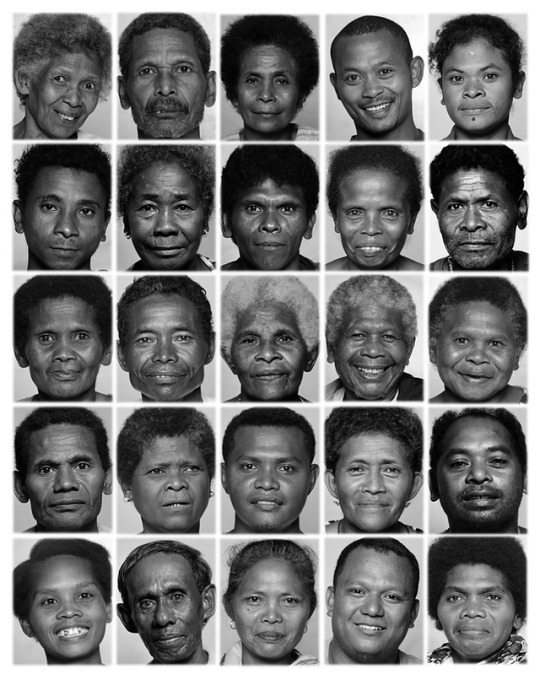
The faces of Aeta peoples. Photos by Ophelia Persson, from “DNA study reveals evidence for the presence of Islander Denisovans in the Philippines” (2021) by Larena Lab, Uppsala University.
Aeta is often used as an umbrella term referring to specific ethnic groups in the Philippines distinguished by their much darker complexions and often curly- to kinky-textured hair, such as the Batak of Palawan and Mamanwa of Mindanao. Due to their distinct physical appearances they are commonly misidentified as modern-day descendants of prehistoric Africans who managed to find their way to the Philippine archipelago in Southeast Asia. In reality, they are descended from the same major populations non-Aeta Filipinos are also descended from, i.e., First Sundaland People and later Austronesian migrants.
Today, Aeta peoples are a recognized albeit underserved minority alongside other (non-Aeta) Indigenous Peoples of the Philippines.
123 notes
·
View notes
Text

And here me thinking that talk after your first period couldn’t get more awkward!😅
🩸🇵🇭
#history#people who menstruate#pre colonial philippines#ceremony#dating#menstruation#tagalog#philippines#indigenous people#womens history#periods#womenhood#coming of age#becoming a woman#musk#philippine history#attracting boys#indigenous culture#blindfolded#scents#menstruation history#nickys facts
13 notes
·
View notes
Text

Aeta Woman
The Aeta (pronounced as “eye-ta,”), Agta or Ayta are a pygmy indigenous people who live in scattered, isolated mountainous parts of Luzon, Philippines. The Aetas are considered to be the earliest inhabitants of the Philippines, preceding the Austronesian migrations.
14 notes
·
View notes
Text
Private Armies of Mindanao
From Filipino Free Thiners Private Armies of Mindanao Faraj Pangeran April 2, 2010 The Rise of Private Armies
Ever since the brutal slaughter in Maguindanao, it raised again the issue of private armies. Private armies exist everywhere in the Philippines and was an issue as far back as the early years of the American colonial regime in the Philippines. After independence was re-established in 1946, private armies were seen as essential to safeguarding the republic from the Huks. Since that time, private armies were seen more of a blessing to Malacanang Palace with the exception of Ramon Magsaysay who saw private armies not only as a lawless element but a threat to military readiness. According to the Philippine National Police, there are over 170 private armies in the Philippines and about 68 are found in the Autonomous Region of Muslim Mindanao (ARMM).
Land Struggles
The genesis of private armies in Mindanao can be traced to the discrimination experienced in the land system. Since time immemorial, both Lumads and Moros had a communal land system which meant that essentially as long as one took care of a piece of land, it was yours. When there was a dispute, a datu, chief, or sultan settled it for you and created a deed or edict.
With the establishment of American rule in Mindanao, a new land tenure system was imposed. This included “nationalizing” (really confiscating) ancestral communal lands of the Lumads and Moros into “public lands” under the Public Land Law of 1903. Lumads and Moros now had to register their land claims in Spanish or in English to the American authorities either in Zamboanga or in Manila and non-Christians were allowed only to claim up to 10 hectares while Christians could claim up to 16. It also voided any deeds or land claims made by sultans, chiefs, and datus. Furthermore, all Moros, Lumads, Igorots, and Aetas came under the supervision of the Bureau of Non-Christian Tribes of the Department of the Interior under the Governor-General. This meant in certain circumstances, a Moro or Lumad needed permission to even apply for a land title from the Bureau of Non-Christian Tribes. With the Public Land Act No. 2874, enacted in November 1919, this was increased to 24 hectares. At the same time, Moros and non-Christians were only allowed to claim up to 8 hectares. The amended public land law of 1936 reduced the homestead size back to 16 hectares, and cut the land claims for Moros and non-Christians to four hectares.
What this essentially did was not only to strip away the ancestral domains of Moros, Lumads, and every other indigenous group in the country, but made religion even a basis to gaining a land title. It also became a land bonanza for American corporations (i.e., Dole, Goodyear, etc.) and Filipino landed families including the Cojuancos, the Arroyos, and many others.
Beginning in 1912, landless peasants from the Visayas and Luzon were shipped to Mindanao and allowed easy access to claim land while Lumads and Moros were forcibly put into re-settlement programs on non-agricultural lands and monitored by the Philippine Constabulary. Christians on the other hand were encouraged to settle in the more productive lands especially along the coasts and corporations were given tax breaks and other measures to develop in Mindanao. This in turn also attracted a number of landed families particularly from Cebu and Manila who saw the opportunities, in particular, logging and mining.
Since technically a Christian person could only claim a certain amount of land, what some Filipino politicians and landlords in the Visayas and Mindanao did was to have their workers claim the land that they wanted, have their connections in Manila process the claim, and then the worker would “sell” that claim to them. Sometimes the workers were not even aware that they had even processed a claim. In this way, some families were able to establish huge estates and plantations in Mindanao without being in violation of the Public Land Laws.
This was compounded with the fact that Moros and other “non-Christians” could not vote, which is one of the reasons why there were no elected Moro, Lumad, Aeta or Igorot politicians during the Commonwealth. The non-Christians were supposedly represented through the Bureau of Non-Christian Tribes which were always staffed by Roman Catholics and never headed by a non-Christian.
During the resettlement programs under Magsaysay, Garcia, and Macapagal settlers were given land for free or simply had to pay a processing fee. These factors are actually the root of the conflict in Mindanao.
In the 1950s, friction began to occur not with just the indigenous populations of Mindanao and the new settlers but between competing politicians. Malacanang began to see the potential of Mindanao in giving that extra–often controversial–votes during elections; private armies had enjoyed support from whomever was president who naturally also came from a political dynasty. Thus, private armies in Mindanao had a two fold purpose: to maintain the political and economic power of political dynasties; and to legitimize the land claims of Christian settlers. In turn, this also would ensure that Mindanao would be part of the Philippine nation-state–something that many Moros still contest–and eventually be “Christianized”. In addition, there were new problems arising from the rise of Communism which gave the Armed Forces of the Philippines an excuse to supply private armies as a counter-insurgency measure.
Generally speaking, warlordism is most pronounced in Sulu, North Cotabato, Davao provinces, Lanao del Sur, South Cotabato, Surigao, Zamboanga, South Cotabato, Sarangani, and Sultan Kudarat–all areas where competition for agricultural land and natural resources is very high. Except for Sulu, North Cotabato, Lanao del Sur, and Sultan Kudarat, these private armies have been recognized at one time or another as a CVO or CAFGUs and are all employed by mining companies, plantations, and/or political dynasties.
Some of the more well known private armies in Mindanao include the Kuratong Baleleng of Ozamis City Mayor Ronaldo O. Parojinog. The Kuratong Baleleng was also instrumental in both Aquino and Estrada’s all out war in Minandao. In North Cotabato vice Governor Emmanuel Piñol maintains another private army. His private army includes its own factory in Mlang and produces mostly M-79 grenade launchers and improvised M-14 armalite rifles. North Cotabato Mayor Roger Taliño has several groups registered as Civilian Volunteers Organization (CVOs) and/or Civilian Armed Forces Geographical Units (CAFGUs), which means it received official backing and were given supplies by Armed Forces of the Philippines or directly by the Department of National Defense.
Not to be outdone, Muslim politicians–particularly in areas where land is contentious–began to arm themselves. “The Barracuda”, the private army of the late Lanao del Norte Governor Ali Dimaporo, is one such example. Dimaporo’s army was reputed to have more firearms than three army brigades and would make Ampatuan’s army look like a boy scout troop. Again, it should be remembered that many of these private armies–whether Muslim or Christian–were encouraged and supplied by our own government and therefore our own taxpayers’ money helped to pay for these armies.
Vigilantes and Liberation Fronts
A by-product of these private armies and the land situation led to the formation of the various Moro liberation fronts as well as the introduction of the New People’s Army (NPA) and vigilante groups in Mindanao. From a Moro perspective, the loss of land was not just seen as an alienation from one’s ancestral ties but as a deep humiliation. The Sultanates of Sulu, Maguindanao, and Lanao were symbols of resistance to foreign rule. But these sultanates were basically gutted by the Public Land Laws and everything else Moro were belittled by the Commonwealth and later the Republic of the Philippines. This was exasperated by the settler programs in the 1950s and 1960s where over a million people from especially the Visayas region displaced the indigenous populations and became the new majority on lands that were part of the Sultanate. Then to further highlight the position of Moros in the country, the Jabidah Massacre occurred in 1968 where 28 Moro recruits were executed by the Armed Forces of the Philippines (AFP) after the AFP decided to abandon its plan to invade Sabah and destablize Malaysia.
The MNLF
In light of all of this, the Moro National Liberation Front (MNLF) was formed in the 1970s and began waging a protracted war for independence. The chairperson of the MNLF, Dr. Nur Misuari, was a former professor at the University of the Philippines-Diliman and had been a member of the Kabataan MakaBayan (KMB) of Jose Sison. The KMB members later formed the nucleus of the leadership of the Communist Party of the Philippines.
Since the beginning of the armed struggle, the MNLF made it clear that their main issues in Mindanao were not religious in nature but were for self-determination and for the social and political inequalities that existed not just in Philippine society but within the BangsaMoro themselves. In the late 1970s as the MNLF began to spread through the Moro majority areas of Mindanao, the Communist Party of the Philippines at the same time began operations in non-Muslim areas in Mindanao.
This in turn led further government support of CAFGUs and escalated the violence, leading to the creation of right wing Christian vigilante groups whose goal was to wipe out both the Muslims and the Communists. These included the Alsa Masa, NAKASAKA, Causa Manifesto, Tadtad, and the Davao Death Squads. The Tadtad group was infamous for its practice of ritual cannibalism and keeping the ears of their victims as souvenirs.
Despite all of this, these groups got official approval not only from the government but also from the Roman Catholic Church who refused to condemn the killings or the death squads. The Auxiliary Bishop of Cebu, Msgr. Manuel Salvador, for example, said in 1986 that ”We really cannot blame these civilians who decide to arm themselves.” Certain other groups were also heavily supported by other Christian churches such as Rev. Sun Myung Moon’s Unification Church, and by anti-communist groups in the US. With the rise of right wing Christian groups, this lead also to the formation of fundamentalist Islamic groups such as the Abu Sayyaf.
One of the Legacies of President Aquino
One of the great ironies of all is that most of these right wing groups–both Christian and Muslim–did not form during the martial law, but during the administration of President Aquino. In 1987, President Aquino praised such groups as a ”concrete manifestation of people power”. The roots of the armed struggle in Mindanao was not originally rooted in religion but in the social inequalities and discrimination until the rise of groups such as the Alsa Masa which occurred during Aquino’s presidency. Likewise, it should be remembered that many of the Muslim politicians like the Ampatuans received their start in politics by being appointed to office by President Aquino and these same people continued to build their private armies with the support of Ramos, Estrada, and Arroyo. Many of these vigilante groups and right wing paramilitary forces still exist today.
The MILF
In 1986, the MNLF and the Aquino administration entered into talks and the MNLF gave up its goal of independence. This gave birth to the Moro Islamic Liberation Front, the Moro National Liberation Front-Reformist, and other smaller groups. The Moro Islamic Liberation Front, in particular, is not secular. It not only believes in BangsaMoro self-determination but also in “Making the Word of Allah Supreme”.
It is also an open secret that the MILF is supported by elements within the Prime Minister’s Office of Malaysia and the Ministry of Foreign Affairs of Malaysia in their special “Moro Desk”. The Malaysian government has a vested interest in the MILF not only because of the Philippine government’s past support of Indonesia during the Konfrontasi but also because the MILF is predominately Maranaw. The MNLF on the other hand traditionally has its mass support from the Tausugs. The Tausugs have claims to Sabah and have been close to Brunei and Indonesia–Malaysia’s rivals. The Maranaw do not have any territorial claims to Malaysia and traditionally have been close to Malaysian royalty. So the struggle between the MNLF and the MILF is not only an ideological struggle (i.e. secular versus Islamic, integration into the Philippine nation-state versus independence, etc.) but also in a way a proxy war between Malaysia and the Philippines over Sabah.
Dismantling the Private Armies
With the outburst of public anger about the massacre in Maguindanao, the current president, Gloria Macapagal-Arroyo, vowed to dismantle private armies. Of course the same sentiments had been said since the time of the Commonwealth. However, the roots of the conflict in Mindanao, the rise of private armies, and the formation of right wing groups are all tied together because it is all based on the social inequalities existing in the entire country (especially regarding land), on the weakness of the judicial system, and to a degree prevailing cultural and religious arrogance. Until there is genuine land reform, genuine electoral reform, a fairer distribution of resources for Mindanao, mutual cultural acceptance, and an efficient, fair and independent judiciary where no one is above the law–the country will always have Communist guerrilla fighters, right wing factions, private armies, and other CAFGUs types.
Originally posted here: https://filipinofreethinkers.org/2010/04/02/private-armies-of-mindanao/
#mindanao#philippines#the philippines#cafgu#paramilitary#anti-communism#counterinsurgency#Gloria Macapagal-Arroyo#politics#aquino#moro#lumad#indigenous people#anti-indigenous
2 notes
·
View notes